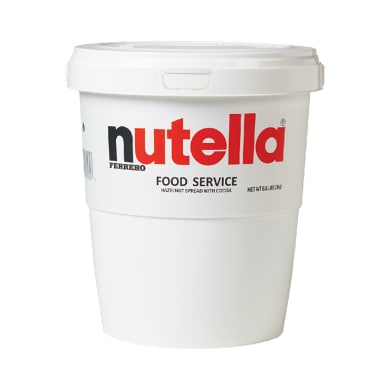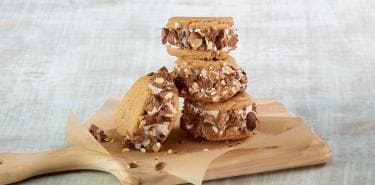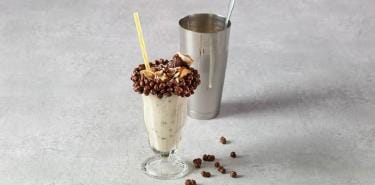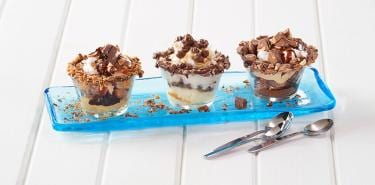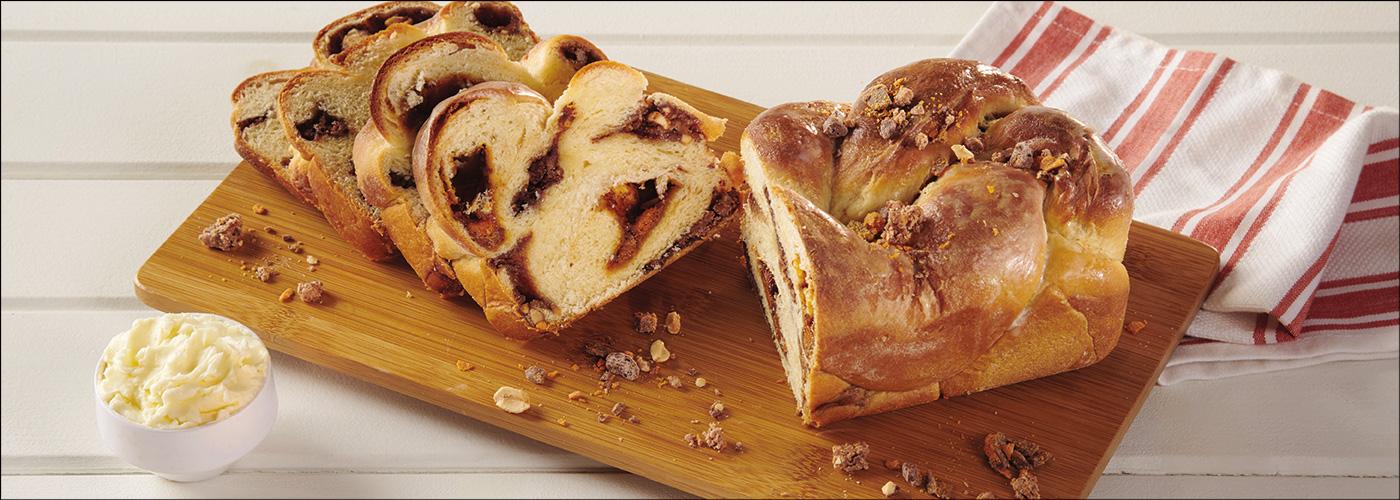
Discover our product
Yields: 2-2 lb. Bread loaves
INGREDIENTS
For Stiff Sourdough Starter:
- 2/3 cup bread flour (12% protein is best)
- 1/6 cup water, warm
- 1/8 cup sugar
- 2 tbsp. sourdough starter (50% flour - 50% water)
- mature - 8 to 12 hours old
INGREDIENTS
For Water Roux:
- 3/4 cup milk, whole
- 2 tbsp. bread flour
- 4 tbsp. butter, salted
INGREDIENTS
For Dough:
- 4-1/2 cups bread flour
- 1/2 cup sugar
- 2 tsp. sea salt
- 1 cup milk, whole, warm
- 2 eggs
- 4 tbsp. butter, salted
- 2 cups Butterfinger®, chopped into 1/2” pieces
- 2 cups Baby Ruth®, chopped into 1/2” pieces
- 2 cups CRUNCH® pieces
Method:
Mix the starter ingredients by hand in a clear plastic container that is at least 3x as tall as the mix. Loosely cover the container to allow air to pass inside. Keep the starter in an area that is approximately 78°F and let it fully develop at room temperature. Depending on your kitchen, this process can take anywhere from 6 to 12 hours before the starter is at the optimum level.
Water Roux: In a small pan, whisk the milk and flour until blended and there are no lumps. Cook on medium-low heat until the roux begins to thicken. Make sure to stir constantly, as this keeps it from burning and yields a smoother roux. Remove from the heat and while still hot, add the butter and stir until completely melted and incorporated into the roux. Remove the roux from the pan and in a bowl, set aside to cool or put in the fridge.
Dough: In a mixer, add roux, milk, eggs, milk and butter into the bowl and blend at low speed until smooth. In another bowl, add the flour, sugar and salt and mix until combined. On low speed, pour the dry ingredients into the mixer and mix with a dough hook until a smooth dough is formed. Be sure to scrape the dough off of the dough hook and from the sides of the mixing bowl. Switch to medium speed and mix for another 12 to 15 minutes. When the dough becomes smooth and elastic, do a “windowpane” test to make sure the dough has enough strength to rise high in the oven.
Bulk Fermentation: Transfer the dough to a lightly oiled bowl, form it into a tight ball, place it in the bowl with the seam side down and smooth side up. Cover the bowl with plastic wrap and let rise for 6 to 12 hours at room temperature, or refrigerate the dough for 24 hours for the best results.
Shaping and Final Proof: Place the dough onto a very lightly dusted work bench. Gently divide the dough into 6 equal pieces weighing 8 oz. each. With a rolling pin, flatten each piece to approximately 1/2” thickness. Apply 1 type of candy to each of the flattened pieces and roll up like a “newspaper” so no candy is exposed to the heat of the oven when baking. Lightly spray 2 – 2lb. bread loaf pans with food release spray. Place the dough balls into your bread pans, cover and let proof for about 2 hours or until the loaves are nearly at the top of the pans.
Baking: Preheat your oven to 350°F and set the oven rack to the center level. Brush the tops of the loaves very gently with the milk glaze and bake loaves for 50 - 55 minutes. Cover with foil if the bread seems to be browning too fast. Using an instant read thermometer, test the internal dough temperature, which should be 190°F as this temperature insures a fully baked loaf. Remove the bread from the oven (but not the pans) and let cool for 20 minutes before removing from the pans and placing it on a bakers’ rack to cool. When completely cool, slice bread with a sharp serrated knife. Top bread with remaining candy pieces.



